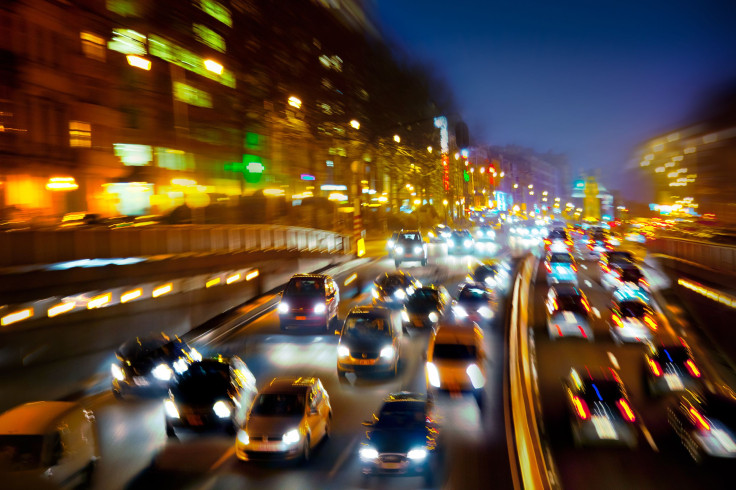Car Horns, Screeching Trains, And Airplanes: How Living Near High-Traffic Areas May Increase Risk Of Obesity

Living in a city can be incredibly noisy. But while we tend to get used to the sound of a train screeching down an express track or a neighbor yelling loudly in the apartment across our building’s alleyway, nothing is better than silence when we’re sleeping. Unfortunately, silence is a luxury in big cities, even at night. If you ever wondered how all that noise might affect your health, a new study from researchers at the Karolinska Institute in Sweden has the answer.
Published in the journal Occupational & Environmental Medicine, researchers found people living near areas of high traffic, railroads, or aircraft noise were more likely to have larger waists, a result of metabolic problems. Specifically, researchers found there was a 0.21-centimeter increase in waist circumference for every 5 decibels of noise a person was exposed to. Among those exposed to all three sources of noise pollution, “the risk of a larger waist doubled from the 25 percent heightened risk among people exposed to only one noise source,” The Guardian reported.
“Traffic noise is a common and increasing environmental exposure, primarily due to ongoing urbanization and growth of the transport sector. Road traffic is the dominating source, followed by railway and aircraft noise,” said Andrei Pyko, lead author of the study from the Karolinska Institute, according to the Press Association. “Health effects related to traffic noise are widespread and span from annoyance, sleep disturbances and changes in stress hormone levels to adverse effects on the cardiovascular system.”
For the study, researchers looked at exposure to the three noise sources among 5,075 Swedish men and women living in five suburban and semirural areas around Stockholm between 2002 and 2006. All of the participants were part of the larger Stockholm Diabetes Prevention Program, and had undergone exams and answered questionnaires meant to determine their lifestyles, state of health, levels of psychological distress, insomnia, job strain, blood pressure, diabetes risk, central body fat, wasit-hip ratio, and overall obesity. They compared all of this to information on road and railway traffic and noise, as well as national data on aircraft noise from the local airport.
In all, 54 percent of participants had been exposed to one source of noise, while 15 percent had been exposed to two and two percent to all three. The researchers said that while the effects weren’t causative, they could be a result of physiological stressors such as higher levels of the stress hormone cortisol.
It makes sense when you consider the fact that levels of cortisol rise when we’re sleep deprived — some research suggests they rise by as much as 45 percent. This causes a cascade of health effects. The immune system and inflammatory pathways become suppressed, leading to a higher susceptibility for disease, and, over a longer term, chronic stress and impaired cognition. With regard to that last one, sleep deprivation might cause changes to the brain in which fattening foods evoke stronger responses in regions associated with the motivation to eat, while weakening the area responsible for making decisions and weighing their consequences. Hence, weight gain.
“This may explain why the effects of noise were mainly seen for markers of obesity, such as waist circumference and waist-hip ratio, rather than for generalized obesity, measured by body mass index,” the researchers wrote. Higher levels of fat in the abdomen, as opposed to elsewhere, have been linked to an increased risk of heart disease, type 2 diabetes, and some cancers.
Source: Pyko A, Eriksson C, Oftedal B, et al. Exposure to traffic noise and markers of obesity. Occupational & Environmental Medicine. 2015.
Published by Medicaldaily.com



























